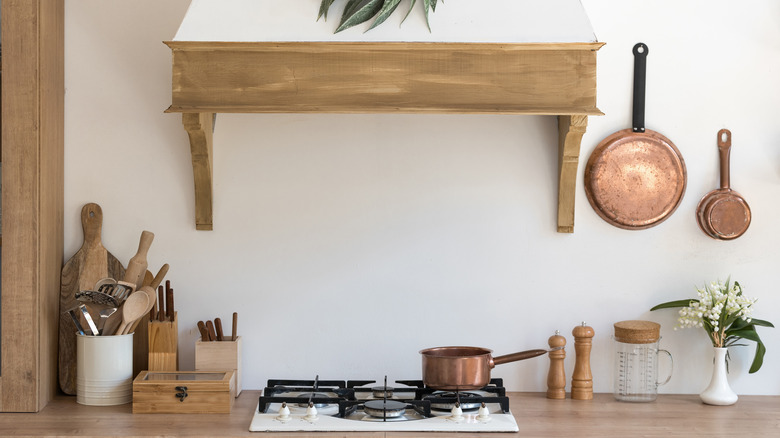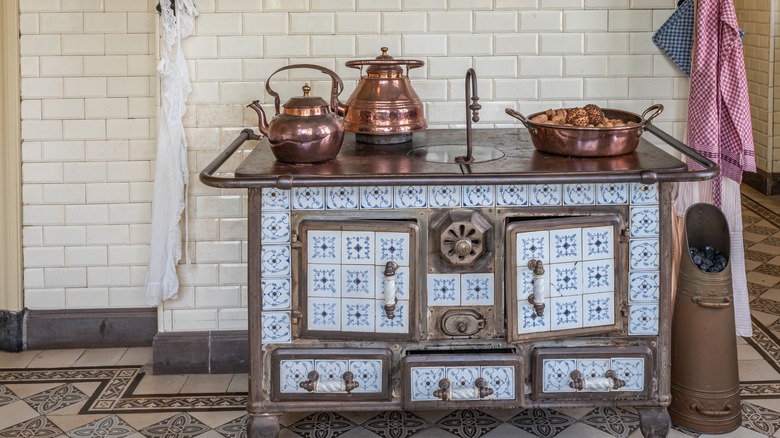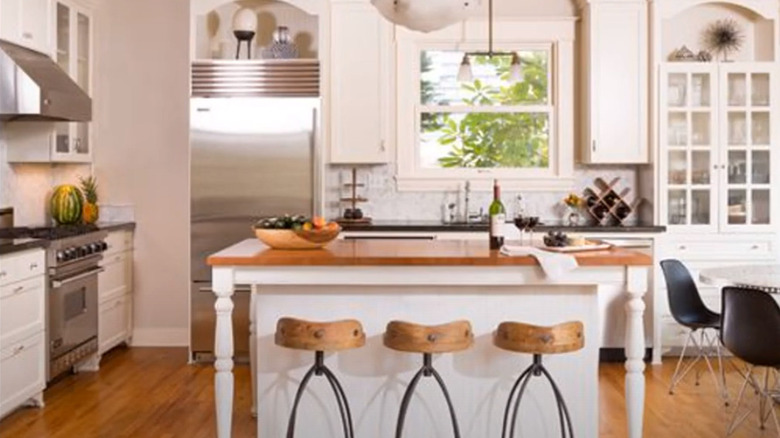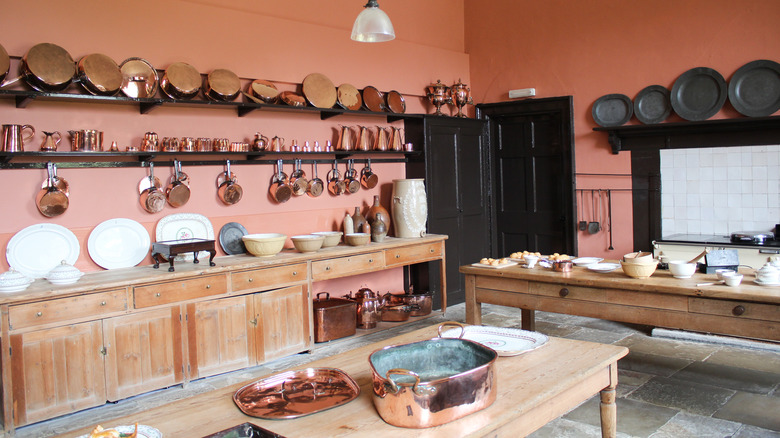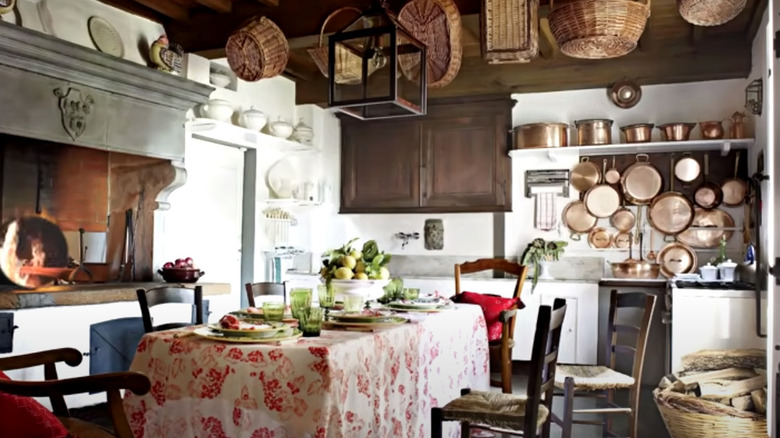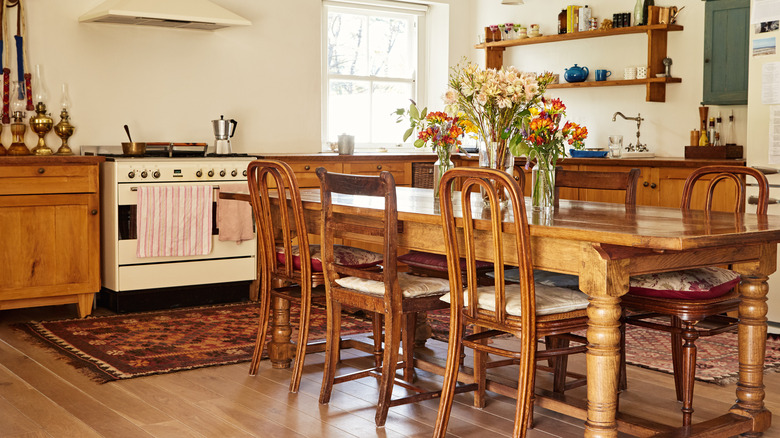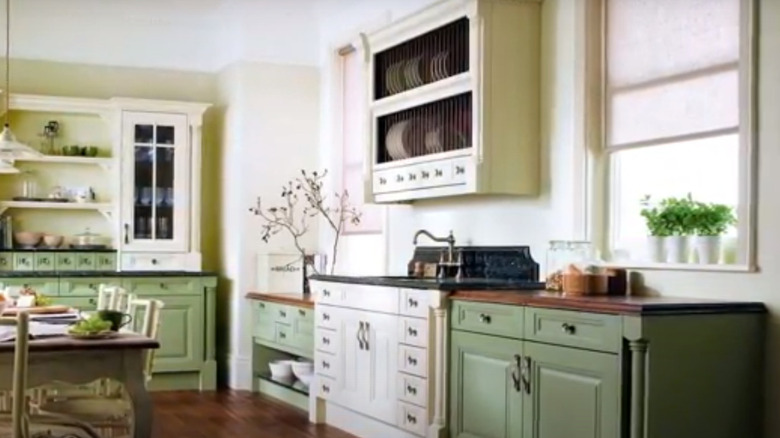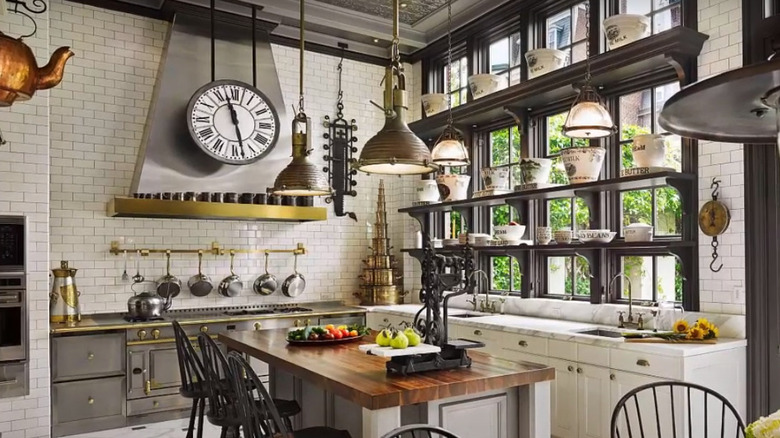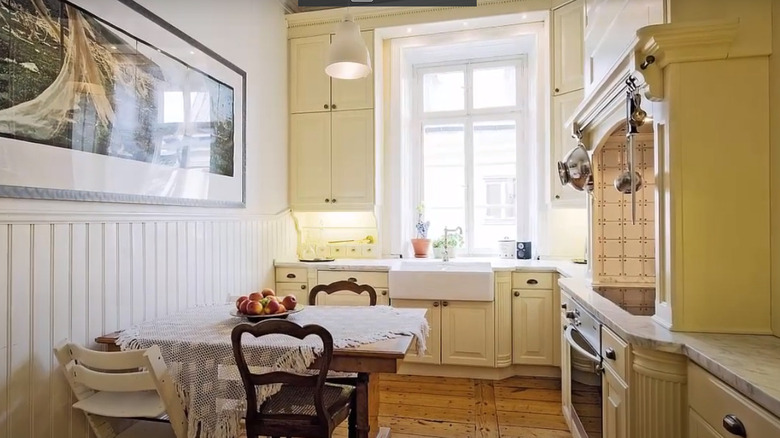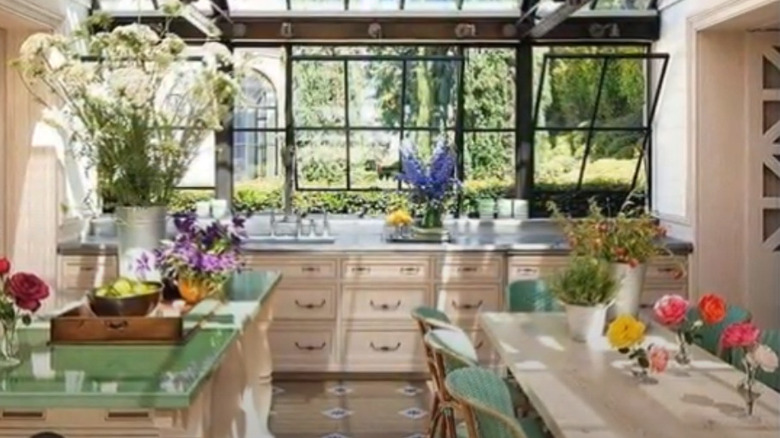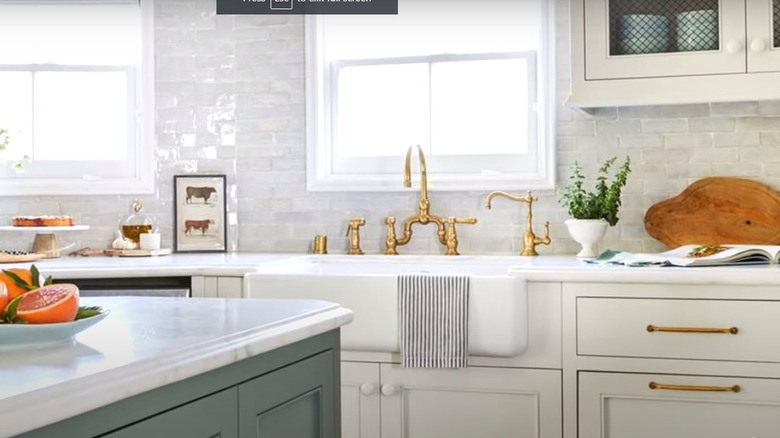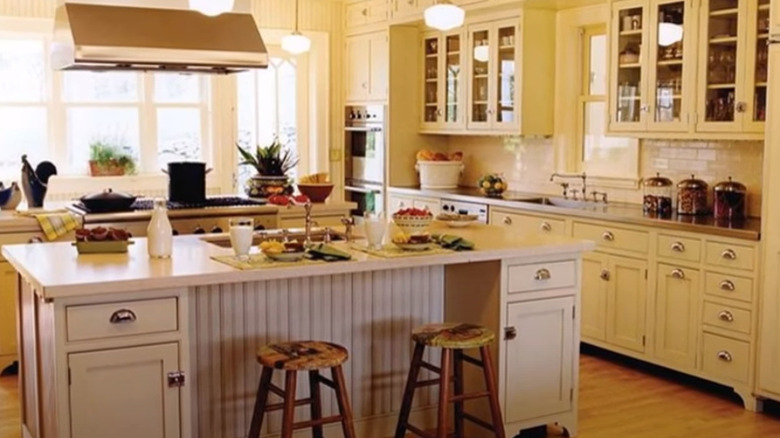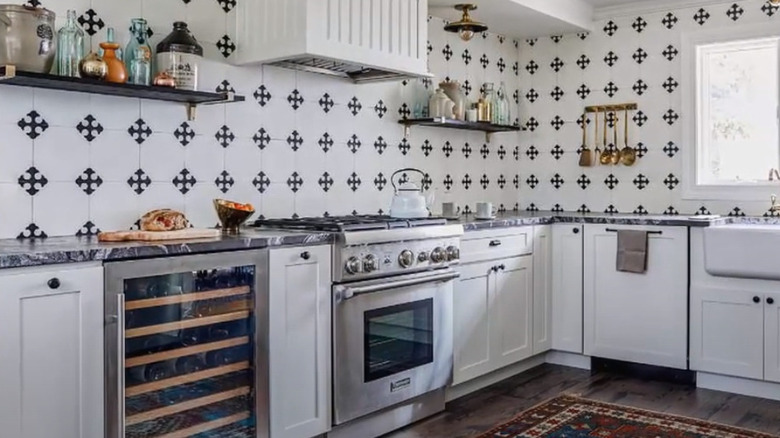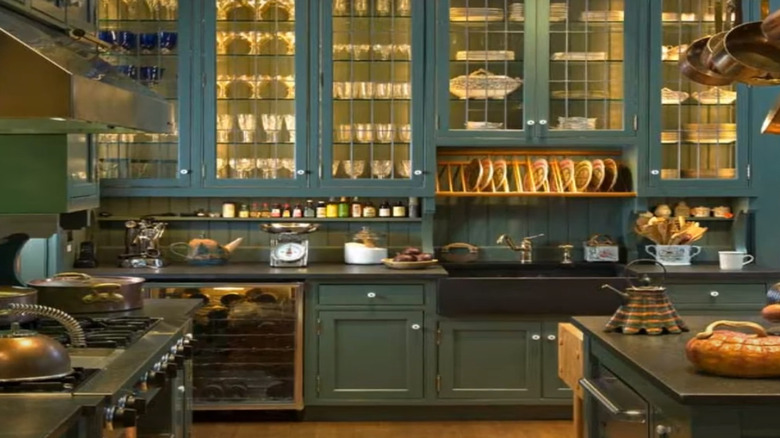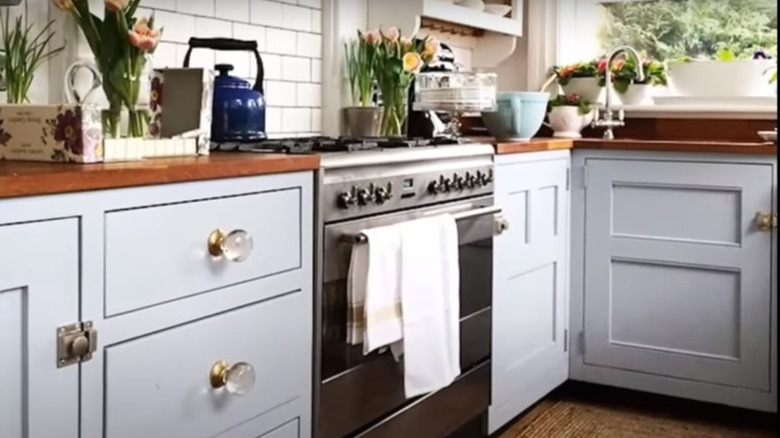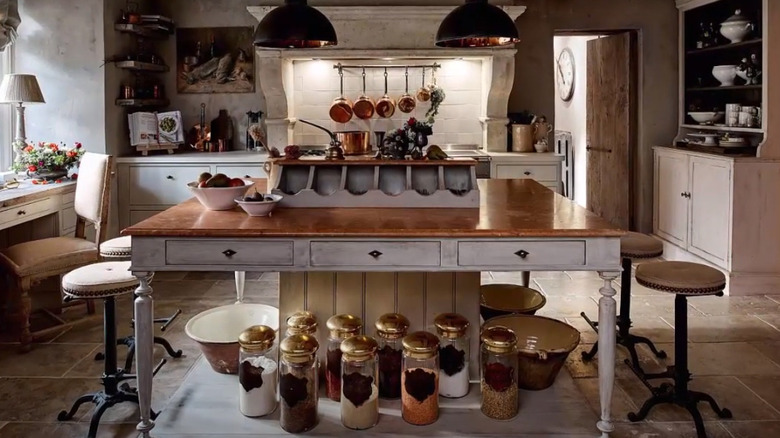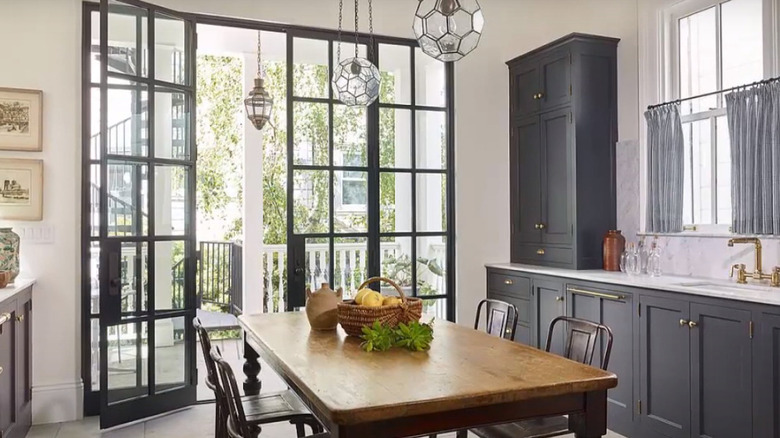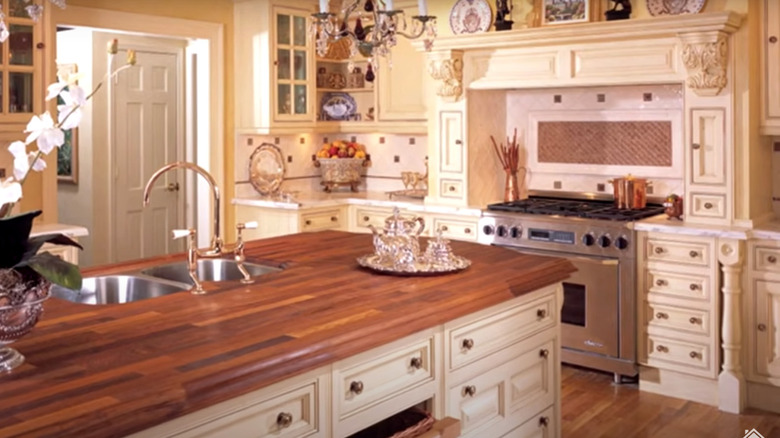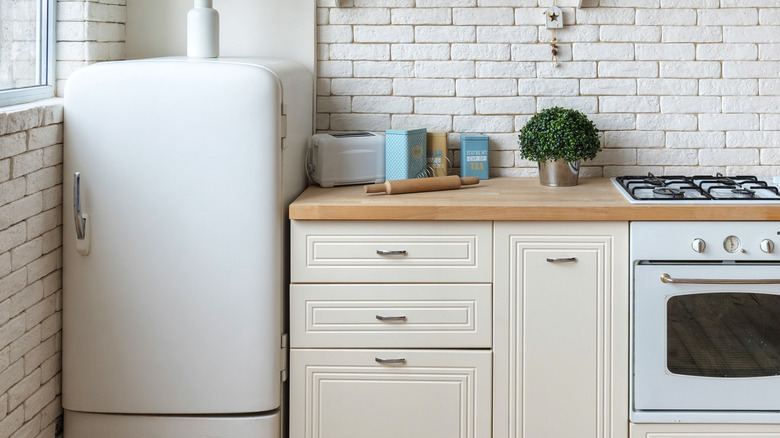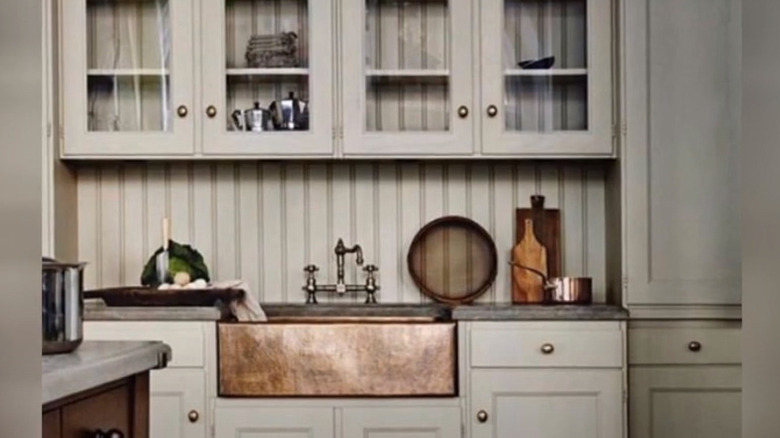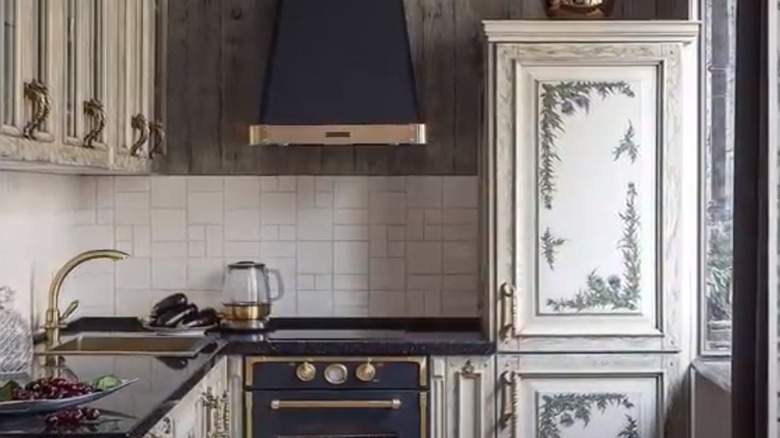20 Victorian-Inspired Kitchens You'd Want To Cook In
You can incorporate several elements into your 21st-century kitchen that echo and reflect Victorian charm. These vary from the type of fixtures and appliances you choose to specific touches like flooring, countertops, and accessories. While most 19th-century kitchens would seem an impossible place to cook, usually without running water or what we know as modern refrigeration, there are a wealth of options to consider if you want to bring a Victorian feel into your very usable contemporary spaces.
According to Old House Online, homeowners carefully balance adapting today's practical needs while remaining true to Victorian style. While many homeowners seek a way to accurately restore their Victorian homes fully to their former grandeur, even the smallest details and elements can make your kitchen, whatever your design aesthetic, drip with 19th-century charm. By adding key features to your kitchens, including materials, accessories, and furniture, you can boast a Victorian feel and meet your practical needs rooted very much in the present.
1. Stoves
The centerpiece of many Victorian-inspired kitchens is the stove. The hearth of the home, during the 19th-century styles, vary in size from large fireplace wood burners to smaller coal-powered units. Today, many modern gas and electric variations have a look and feel of these old beauties and are available from various manufacturers specializing in vintage and antique reproductions.
2. Natural surfaces and counters
During the Victorian era, most homes featured countertops made of natural materials like wood or stone. Marble was used sparingly for baking and dough-friendly surfaces, as was ceramic tile. In today's modern kitchens, wood counter surfaces offer both a rustic quality and warmth.
3. Stone and wood flooring
During the 19th century, most kitchens featured stone tile or wooden plank floors, which offered both durability and safety. Stone was often used for its resistance to fire in areas like the kitchen, where coal and wood were employed to power stoves.
4. Iron and copper cookware
During the Victorian era, most kitchens placed their cookware in easily used and visible spaces. A rack of copper or iron pans and other accessories instantly adds an old-world feel to any modern kitchen.
5. Cabinets
Large expanses of wall cabinets in kitchen spaces weren't popular until the early 20th century, which meant that most 19th-century kitchens used a mix of open shelving and freestanding cabinetry for storage. Pie safes, hutches, and pantry cupboards were popular, as well as open shelves featuring canned goods and jars of pantry staples.
6. Plate racks
With limited storage options, most kitchens sported a plate stand — a wooden rack made of rods specifically designed to both store and display your china. Since many homes had very large sets of Victorian dishes, these racks were often large or spread across multiple frames and shelves in a single kitchen.
7. Details and accessories
If you're looking for a touch of old-world cooking in your modern kitchen, old-school accessories and touches can do wonders, including brass or silver vintage kettles and oversized clocks. You can also add other antique appliances for that 19th-century touch, including hand-cranked pasta makers, meat grinders, fruit presses, and ice cream churns.
8. Wainscotting
Many 19th-century kitchens featured the sort of elaborate moldings found in many a Victorian and Queen Anne home, including walls covered in paneling, bead board, or wainscotting. The paneling not only protected the walls from dirt and damage in a messy kitchen but added visual and architectural interest to otherwise plain walls.
9. Herb gardens and greenery
In the 19th century, indoor plants often augmented outdoor herb gardens for cooking. Many Victorian kitchens featured jars and pots of the chef's favorite cooking herbs, as well as seedlings of other garden yields ready for planting. Add some plants in simple glass jars, terra cotta pots, and bell jars for a decidedly Victorian greenhouse feel.
10. Plumbing and fixtures
While running water was not always available in 19th-century homes, some wealthy homeowners had access to this necessity, particularly in urban areas. For today's kitchens, black or copper faucets and fixtures give a classic and rustic feel to any kitchen that echoes old-world style.
11. Central table or island
The 19th-century home had limited counters or cabinets around the kitchen's perimeter. They often employed a central counter or table that could be used for cooking and eating, particularly for children who rarely ate in the formal dining rooms of Victorian homes. Today, large central islands fulfill a similar function in modern kitchens.
12. Beautiful tile
Like today, ceramic and stone tile was often used as both a way to beautify and protect the walls of the kitchen. Ceramic tile surrounds placed behind wet and cooking areas withstood dirt, water, and fire. They were often beautifully patterned, colored, and intricately designed.
13. Glass fronted cabinets and shelves
Though built-in cabinetry was not popular during the Victorian era, many kitchens made ample use of shelving and glass-fronted china cabinets to display dishware and other items. Today, open shelving and glass-fronted cupboards are a popular way to display pretty dishes and glassware.
14. Hardware
The hardware on Victorian cabinets and cupboards was often beautiful and ornate. Drawer and cabinet pulls were usually glass, iron, silver, brass, or ivory. Today, even the most modern and budget-friendly cabinets and drawers can be decked out in stunning hardware for that Victorian glamour feel.
15. Chairs and stools
19th-century homes are known for their opulent chairs and couches. However, seating for the kitchen was often more pared down and basic, including wooden, cane, and ladderback chairs that were durable and resisted spills and dirty fingers. Wooden stools around tables and counters were also popular, as were benches in breakfast nooks that offered an alternative to formal dining rooms.
16. Lighting
While electricity was still new in the 19th century and not available to the average homeowner, lighting was often provided by candles or gas lamps. Even the most modern kitchen today can gain a little bit of Victorian grandeur by choosing old-world style lighting fixtures, including stained glass or Tiffany-style fixtures, chandeliers, hurricane lamps, or simple iron lanterns.
17. Range hoods
The Victorian era is marked by large, sometimes ornate range hoods, which along with the stove, often formed the focal point of the room. They were usually wood or brass, accented by carved details and elaborate moldings.
18. Fridge
While Victorian homes used many different techniques to keep things cool and dry, including cold rooms, ice boxes, and sometimes, just placing items outdoors, no modern kitchen goes without a fridge. Today, you can opt for built-in, hidden appliances behind wood cabinets or many newly-made vintage models that evoke bygone days.
19. Sinks
Today's wealth and popularity of the farmhouse sink in many modern design schemes make it easy to get a more rustic, 19th-century feel in your kitchen. While many sinks in Victorian homes were free-standing tub sinks with or without plumbing, many contemporary options for large, deep farmhouse sinks are readily available for a bit of vintage charm. This copper sink offers a stunning variation on the tried and true white.
20. Floral details
Victorians loved their florals, be they hardware, carved or painted details, or rich textiles. These botanical-inspired cabinets are a beautiful addition to any modern kitchen for that touch of Victorian garden chic.
